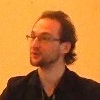Topic Menu
► Topic MenuTopic Editors



Piezoelectric Materials and Applications
Topic Information
Dear Colleagues,
Piezoelectric materials have been of interest for many decades now in the framework of several applications fields, ranging, for instance, from sonar, historically, to integrated sensors and actuators more recently, along with biomedical applications. Indeed, with the growing interest in high-efficient compact actuators and micro-electromechanical systems (MEMS), piezoelectric material elaboration along with use in innovative applications (memory, energy harvesting, actuators, etc.), such materials and devices have received increasing attention, yet there is still large room of improvement for a better understanding of processes and physical effects of such transducers, also including current socio-economic stakes such as SDGs. Thus, this Topic aims to gather cutting-edge progress or topical reviews in the field of piezoelectric materials and their application.
Potential topics may cover but are not limited to:
- Lead-free piezoelectric materials
- Piezoelectric polymers
- Energy-efficient synthesis and fabrication of piezoelectric materials
- Small and large-signal characterization
- Analytical and numerical modeling
- Application in actuators
- Piezoelectric MEMS and NEMS
- Energy harvesting
- Energy and information storage (FRAM, etc.)
Prof. Dr. Mickaël Lallart
Dr. Hélène Debeda
Prof. Dr. Jörg Wallaschek
Dr. Guylaine Poulin-Vittrant
Topic Editors
Participating Journals
| Journal Name | Impact Factor | CiteScore | Launched Year | First Decision (median) | APC |
|---|---|---|---|---|---|

Materials
|
3.2 | 6.4 | 2008 | 15.2 Days | CHF 2600 |

Applied Sciences
|
2.5 | 5.5 | 2011 | 19.8 Days | CHF 2400 |

Sensors
|
3.5 | 8.2 | 2001 | 19.7 Days | CHF 2600 |

Micromachines
|
3.0 | 6.0 | 2010 | 17.2 Days | CHF 2100 |

Actuators
|
2.3 | 4.3 | 2012 | 19 Days | CHF 2400 |

Preprints.org is a multidisciplinary platform offering a preprint service designed to facilitate the early sharing of your research. It supports and empowers your research journey from the very beginning.
MDPI Topics is collaborating with Preprints.org and has established a direct connection between MDPI journals and the platform. Authors are encouraged to take advantage of this opportunity by posting their preprints at Preprints.org prior to publication:
- Share your research immediately: disseminate your ideas prior to publication and establish priority for your work.
- Safeguard your intellectual contribution: Protect your ideas with a time-stamped preprint that serves as proof of your research timeline.
- Boost visibility and impact: Increase the reach and influence of your research by making it accessible to a global audience.
- Gain early feedback: Receive valuable input and insights from peers before submitting to a journal.
- Ensure broad indexing: Web of Science (Preprint Citation Index), Google Scholar, Crossref, SHARE, PrePubMed, Scilit and Europe PMC.


